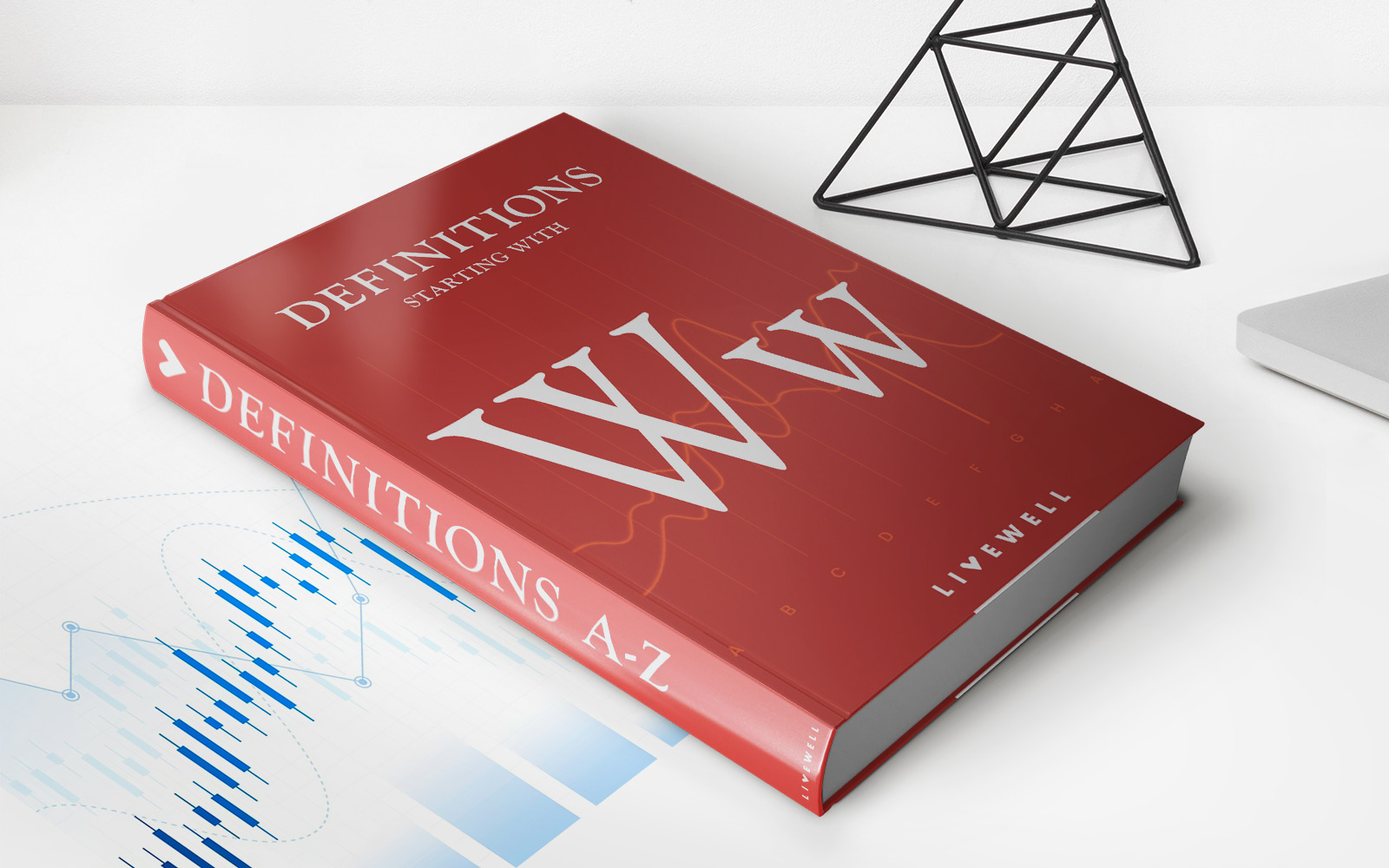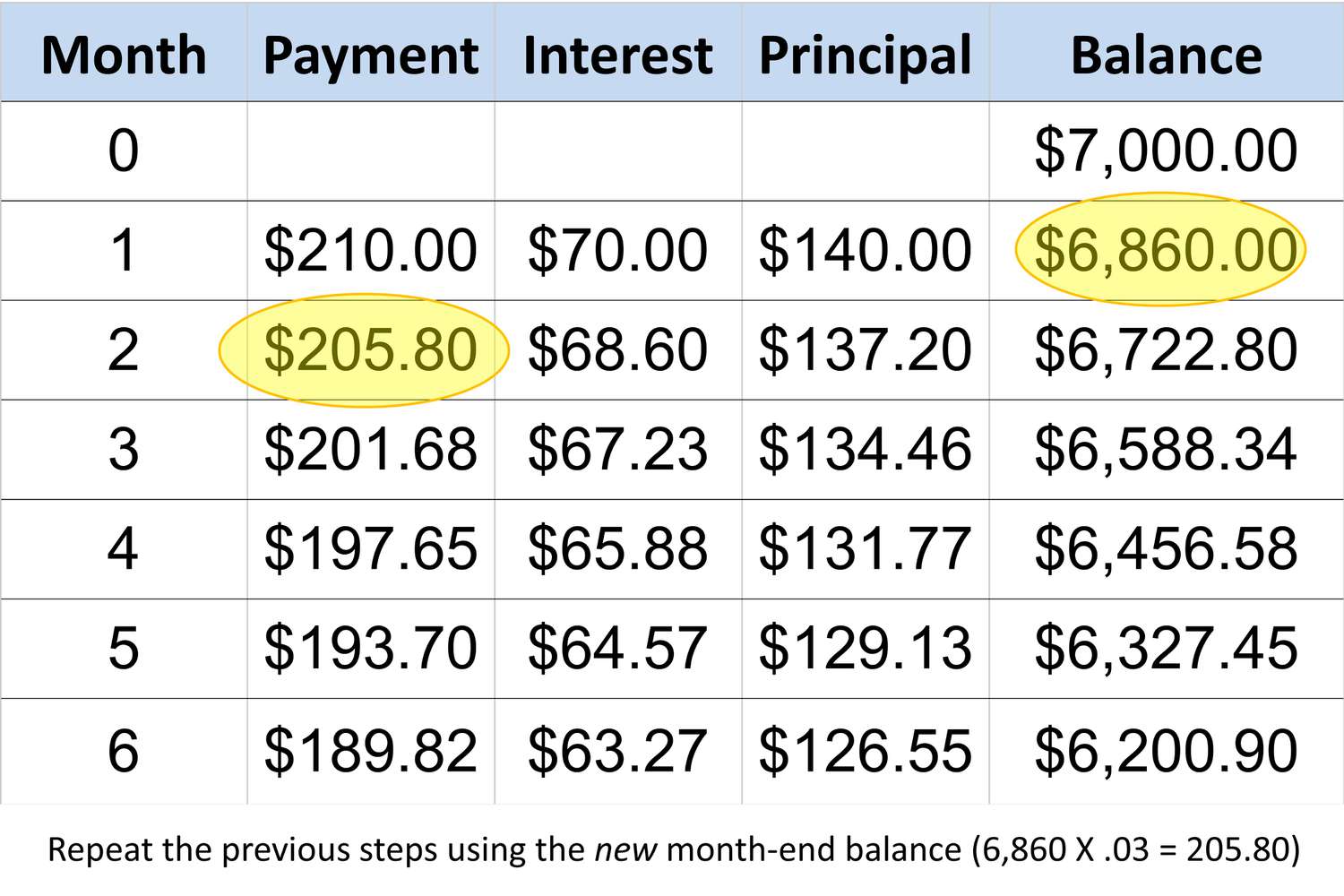

Finance
What Is Binding In Insurance?
Modified: December 30, 2023
Learn what binding in insurance means and how it relates to finance. Get a comprehensive understanding of this crucial aspect of the insurance industry.
(Many of the links in this article redirect to a specific reviewed product. Your purchase of these products through affiliate links helps to generate commission for LiveWell, at no extra cost. Learn more)
Table of Contents
Introduction
Insurance plays a crucial role in protecting individuals and businesses from unforeseen risks and financial losses. When it comes to obtaining insurance coverage, the process can sometimes be complex and time-consuming. However, in certain situations where immediate coverage is needed, an insurance agent or broker may have the option to bind insurance coverage. Binding insurance refers to the temporary agreement between the insured and the insurer to provide coverage before the issuance of a formal insurance policy.
Binding insurance is a valuable tool that allows individuals and businesses to secure immediate coverage for their assets, liabilities, or other insurable interests. It provides a level of protection while the underwriting process takes place, ensuring that the insured is not left exposed to potential risks in the interim. This article will delve into the concept of binding insurance, its purpose, the process involved, as well as the benefits and limitations it presents.
To understand the significance of binding insurance, it is essential to grasp the concept of insurance underwriting. Underwriting involves the evaluation of risks by insurance companies to determine the premium rates and terms of coverage. This process typically involves assessing the risks associated with the insured, such as their claims history, financial stability, and the value of the assets being insured. It is through this evaluation that insurance companies can determine the appropriate premium and coverage for the client.
However, the underwriting process can sometimes be time-consuming, especially for complex insurance policies or when additional information is required from the insured. This delay can leave individuals or businesses vulnerable to potential risks or loss without the proper coverage in place. Binding insurance acts as a temporary solution to address this gap by providing immediate coverage until the formal insurance policy is issued.
In the next sections, we will explore in more depth the definition of binding in insurance, the purpose it serves, the process involved, as well as the benefits and potential risks associated with it. By understanding the concept of binding insurance, individuals and businesses can make informed decisions when it comes to securing coverage efficiently and effectively.
Definition of Binding in Insurance
Binding in insurance refers to the temporary agreement between an insured individual or business and an insurance company to provide immediate coverage before the official issuance of a formal insurance policy. It is a process that allows for instant protection against potential risks and losses, providing a valuable interim solution while the underwriting process takes place.
When an insurance agent or broker binds coverage, they are essentially making a commitment on behalf of the insurance company to provide the insured with temporary insurance coverage. This binding agreement is typically based on the information provided by the insured at the time of application and carries certain terms and conditions.
During the binding period, which is usually a limited period of time, the insured is covered under certain specified terms and conditions. This means that in the event of a covered loss or claim, the insurance company will provide the necessary financial protection as outlined in the temporary coverage agreement.
It is important to note that the binding agreement is contingent upon the accuracy and truthfulness of the information provided by the insured. If any misrepresented or false information is discovered during the underwriting process, the insurance company has the right to revise or even cancel the binding agreement.
Binding in insurance can apply to various types of insurance policies, including property insurance, liability insurance, and even certain specialty lines such as marine or aviation insurance. The specific terms of the binding agreement can vary depending on the type of insurance and the insurance company’s policies and guidelines.
Overall, binding in insurance provides a temporary but essential solution for individuals and businesses that require immediate coverage before the underwriting process is completed. It allows for peace of mind and protection against potential risks and losses during this critical period.
Purpose of Binding
The main purpose of binding in insurance is to provide immediate coverage to the insured while the underwriting process is being completed. It serves as a temporary solution for individuals and businesses who cannot afford to wait for the formal issuance of an insurance policy.
One of the key reasons for binding coverage is to ensure that individuals and businesses are not left exposed to potential risks and losses during the underwriting process. Without binding insurance, there may be a significant gap in coverage, leaving the insured vulnerable to financial and legal liabilities. Binding provides a level of protection and peace of mind during this critical period.
Another purpose of binding is to facilitate time-sensitive transactions. In some situations, individuals or businesses may require immediate proof of insurance for a specific event or transaction. For example, a construction contractor may need evidence of insurance coverage to secure a contract or a homeowner may need coverage before closing on a property purchase. Binding insurance allows for the quick issuance of a temporary policy that meets these immediate requirements.
Binding also serves as an incentive for insurance agents and brokers to secure new business. By offering the option to bind coverage, agents can provide a faster and more efficient service to their clients, potentially leading to increased customer satisfaction and retention.
Furthermore, binding insurance can be advantageous in situations where the underwriting process is likely to result in a favorable outcome. If the insured has a good claims history, strong financial stability, and meets the insurance company’s underwriting guidelines, the binding agreement can provide immediate coverage without any negative impacts on the terms and conditions of the final insurance policy.
However, it is important to note that the purpose of binding in insurance is not to replace the formal underwriting process. Binding is a temporary solution that allows individuals and businesses to obtain immediate coverage, but the insurance company still needs to complete the underwriting process to assess the risks and determine the final terms and conditions of the policy.
In summary, the purpose of binding in insurance is to provide immediate coverage to individuals and businesses, preventing gaps in protection and ensuring peace of mind during the underwriting process. It also facilitates time-sensitive transactions and incentivizes insurance agents to deliver efficient and responsive service to their clients.
Process of Binding
The process of binding in insurance involves several steps to ensure that both the insured and the insurance company are in agreement regarding the temporary coverage. While the specific details may vary between insurance companies, the general process of binding typically follows a similar framework.
1. Application: The process begins with the insured completing an application for insurance coverage. This application includes providing relevant information, such as personal or business details, the type of coverage required, and any specific details related to the assets or liabilities being insured.
2. Communication with an agent or broker: Once the application is submitted, the insured will typically work with an insurance agent or broker who will review the application and assess the potential risks. The agent or broker will then communicate with the insurance underwriters to determine if binding insurance coverage is possible.
3. Agreement on terms: If the insurance company agrees to bind coverage, the terms of the binding agreement are established. This includes the duration of the binding period, the specific coverage provided, and any applicable deductibles or limits. The terms of the binding agreement are communicated to the insured for their review and acceptance.
4. Premium payment: In most cases, the insured will be required to pay the premium for the binding coverage upfront. The amount of the premium will depend on various factors, including the level of risk associated with the insured and the type of coverage being provided. Once payment is received, the binding coverage becomes effective.
5. Temporary proof of coverage: The insurance company will provide the insured with a document that serves as temporary proof of coverage during the binding period. This document outlines the key details of the binding agreement, including the coverage amounts and any applicable terms and conditions.
6. Underwriting process: While the insured is covered under the binding agreement, the insurance company will continue with the underwriting process. This involves collecting additional information, assessing the risks, and finalizing the terms and conditions of the formal insurance policy.
7. Issuance of formal policy: Once the underwriting process is completed, the insurance company will issue the formal insurance policy. The terms and conditions of the policy may be based on the information provided during the binding period or may be adjusted based on the outcome of the underwriting process.
It is important for the insured to carefully review the terms and conditions of the binding agreement and the subsequent formal policy. If there are any discrepancies or errors, it is crucial to notify the insurance company immediately to ensure accurate coverage.
Overall, the process of binding in insurance involves submitting an application, communicating with an agent or broker, agreeing on terms, paying the premium, receiving temporary proof of coverage, completing the underwriting process, and finally receiving the formal insurance policy.
Binding Authority
In the insurance industry, binding authority refers to the level of authority granted to insurance agents or brokers to bind insurance coverage on behalf of an insurance company. It is the authority given to these intermediaries to enter into binding agreements with clients without the need for additional approval from the insurer.
Binding authority is a significant responsibility, as it allows agents or brokers to make important decisions regarding insurance coverage on behalf of the insurance company. It demonstrates trust in their knowledge and expertise in assessing risks and determining appropriate coverage.
The extent of binding authority can vary depending on several factors, including the type of insurance, the insurer’s guidelines, and the experience and qualifications of the agent or broker. Insurance companies typically establish binding authority limits to ensure that agents and brokers operate within predetermined boundaries.
Binding authority may encompass various aspects of the insurance process, including determining policy terms, setting coverage limits, specifying deductibles, and even quoting premium rates. Agents or brokers with binding authority can effectively bind coverage for clients, providing immediate protection while the formal policy is being processed.
It is worth noting that binding authority is not absolute or unlimited. Insurance companies set specific guidelines and limitations to manage the risks associated with binding coverage. Agents and brokers must adhere to these guidelines to ensure that they exercise their binding authority appropriately and in the best interests of the insurer.
The binding authority granted to agents or brokers is typically based on their experience, qualifications, and track record. Insurance companies assess the expertise and capabilities of individuals before delegating binding authority to them. Ongoing performance evaluations and monitoring are also conducted to ensure continued compliance with the insurer’s guidelines.
Furthermore, insurance companies may periodically review and adjust the binding authority granted to agents or brokers based on factors such as market conditions, regulatory changes, and the overall performance of the intermediary.
Insurance agents or brokers with binding authority have a crucial role in providing efficient and responsive service to their clients. By being able to bind coverage without delay, they can meet the immediate insurance needs of customers, especially in time-sensitive situations.
Overall, binding authority grants agents or brokers the power to bind insurance coverage on behalf of insurance companies, allowing for immediate protection while the formal policy is being processed. It is a responsibility that requires knowledge, expertise, and adherence to the insurer’s guidelines.
Binding Constraints
While binding insurance can provide immediate coverage and peace of mind, there are certain constraints and limitations to be aware of. These constraints are put in place to manage risks and ensure that the binding process is fair and equitable for both the insured and the insurance company.
1. Time Limitations: Binding coverage is typically offered for a limited period of time. This allows the insurance company to complete the underwriting process and issue the formal insurance policy. Insured individuals or businesses must ensure that they are aware of the duration of the binding period and take necessary steps to obtain the formal policy within that timeframe.
2. Accuracy of Information: The binding agreement is contingent upon the accuracy and truthfulness of the information provided by the insured. If it is discovered that the insured has misrepresented information or omitted important details, the insurance company may revise or even cancel the binding agreement. It is essential to provide complete and accurate information to ensure proper coverage.
3. Underwriting Process: While the insured is covered under the binding agreement, the insurance company will continue with the underwriting process. This process involves evaluating risks, collecting additional information, and finalizing the terms and conditions of the formal insurance policy. The terms of the formal policy may differ from the binding agreement based on the outcome of the underwriting process.
4. Limits and Deductibles: Binding coverage may have certain limits and deductibles in place. These limits define the maximum amount the insurance company will pay in the event of a covered loss, while deductibles determine the amount the insured is responsible for before the insurance coverage kicks in. Insured individuals or businesses must clearly understand these limits and deductibles to make informed decisions.
5. Insurer Discretion: Insurance companies have the discretion to accept or decline a binding agreement. The decision to bind coverage is based on the insurance company’s assessment of the risks associated with the insured. If the insurance company deems the risks to be too high or outside their underwriting guidelines, they may choose not to enter into a binding agreement.
6. Policy Exclusions: Binding coverage may have certain exclusions, specific situations or events that are not covered by the insurance policy. Insured individuals or businesses must review the binding agreement and the subsequent formal policy to understand the scope of coverage and any exclusions that may apply.
It is crucial for insured individuals or businesses to carefully review the terms and conditions of the binding agreement and subsequent formal policy. If there are any concerns or questions regarding the constraints or limitations, it is advisable to seek clarification from the insurance agent or broker.
By understanding and considering these binding constraints, insured individuals or businesses can make informed decisions while obtaining immediate coverage and navigate the process effectively.
Differences between Binding and Issuing a Policy
While binding insurance and issuing a policy both involve providing coverage to individuals or businesses, there are distinct differences between these two processes. Understanding these differences is crucial for insured individuals or businesses to effectively navigate the insurance process and manage their coverage needs.
1. Timeframe: One of the key differences between binding and issuing a policy is the timeframe involved. Binding coverage is a temporary solution that provides immediate protection while the formal insurance policy is being processed. It is typically valid for a limited period of time, allowing the insurer to complete the underwriting process. Issuing a policy, on the other hand, refers to the process of providing a permanent insurance policy that outlines the long-term coverage for the insured.
2. Coverage Terms: The terms of coverage can also vary between binding and issuing a policy. Binding coverage is based on the information provided at the time of application and is subject to the specific terms and conditions agreed upon during the binding period. The terms may be adjusted or finalized during the underwriting process. In contrast, issuing a policy involves the establishment of long-term coverage terms that are outlined in the formal insurance policy. These terms are generally based on the insurer’s underwriting guidelines and the insured’s specific needs.
3. Underwriting Process: The underwriting process plays a significant role in both binding and issuing a policy. During the binding period, the insurer conducts the necessary underwriting procedures to evaluate the risks associated with the insured. However, the formal underwriting process is typically more rigorous and comprehensive when issuing a policy. It involves a more thorough assessment of the insured’s risks, including their claims history, financial stability, and other relevant factors.
4. Documentation: Another difference lies in the documentation provided during the binding and issuing processes. When binding coverage, the insured receives temporary proof of coverage that outlines the terms, conditions, and limits. This document serves as evidence of insurance coverage during the binding period. In contrast, when a policy is issued, the insured receives a formal insurance policy document. This document provides detailed information on the coverage, exclusions, deductibles, limits, and other relevant policy terms.
5. Legal Requirements: Binding coverage may require less documentation and paperwork compared to issuing a policy. This is because it is a temporary agreement that allows for immediate coverage. Issuing a policy, on the other hand, involves fulfilling any legal requirements and ensuring compliance with applicable laws and regulations. It may involve more extensive documentation, signatures, and formalities to establish a legally binding insurance contract.
It is important for insured individuals or businesses to understand these differences to effectively manage their insurance needs. While binding coverage provides immediate protection, it is temporary in nature and subject to the underwriting process. Issuing a policy, on the other hand, establishes a long-term contract with specific coverage terms and conditions.
Benefits of Binding in Insurance
Binding in insurance offers several benefits to insured individuals or businesses, providing them with immediate coverage and peace of mind during the underwriting process. Understanding these benefits can help individuals make informed decisions when it comes to securing insurance coverage.
1. Immediate Coverage: One of the primary benefits of binding in insurance is the ability to obtain immediate coverage. This is particularly valuable in time-sensitive situations where individuals or businesses cannot afford to wait for the formal issuance of an insurance policy. Binding coverage ensures that they have protection against potential risks and losses during this critical period.
2. Peace of Mind: Binding insurance provides peace of mind to insured individuals or businesses. Knowing that they are temporarily covered while the underwriting process takes place allows them to focus on their activities without worrying about potential gaps in insurance protection. This peace of mind is especially important for businesses as it enables them to proceed with operations, contracts, or other transactions confidently.
3. Quick Resolution of Insurance Needs: Binding coverage allows insured individuals or businesses to quickly address their insurance needs. This can be beneficial in situations where immediate coverage is required, such as closing on a real estate transaction or securing a contract. Binding insurance provides a fast and efficient solution to meet these time-sensitive requirements.
4. Flexibility: Binding in insurance offers a certain level of flexibility. It allows insured individuals or businesses to secure coverage based on the information provided at the time of application without having to undergo the full underwriting process. This flexibility can be especially advantageous for individuals or businesses with good claims history, strong financial stability, or straightforward insurance needs.
5. Efficiency in Insurance Processes: Binding coverage enables insurance agents or brokers to provide a more efficient and responsive service to their clients. By being able to bind coverage without delay, agents can meet the immediate insurance needs of customers, potentially leading to improved customer satisfaction and retention. This efficiency can also benefit insurers by facilitating the processing of applications and reducing the time required for underwriting.
6. Competitive Advantage: For insurance agents or brokers, offering the option of binding coverage can give them a competitive advantage in the market. Being able to provide immediate coverage to clients sets them apart from competitors and demonstrates their commitment to meeting client needs quickly and efficiently.
While there are significant benefits to binding in insurance, it is important to note that it is a temporary solution. Insured individuals or businesses must ensure that they complete the necessary steps to obtain the formal insurance policy within the specified timeframe to maintain continuous and comprehensive coverage.
In summary, the benefits of binding in insurance include immediate coverage, peace of mind, quick resolution of insurance needs, flexibility, efficiency in insurance processes, and a competitive advantage for insurance agents or brokers. Understanding and utilizing binding coverage can help insured individuals or businesses address their insurance needs in a timely and effective manner.
Risks and Limitations of Binding in Insurance
While binding insurance offers immediate coverage and certain advantages, there are also risks and limitations that insured individuals or businesses should be aware of. Understanding these potential drawbacks can help individuals make informed decisions and manage their insurance needs effectively.
1. Incomplete Underwriting: Binding coverage is based on the information provided at the time of application, without the completion of the full underwriting process. This means that the insurance company may not have assessed all the risks and details associated with the insured. As a result, there is a possibility that the final terms and conditions of the insurance policy could differ from the binding agreement, potentially resulting in coverage limitations or exclusions that were not initially anticipated.
2. Limited Duration: Binding coverage is temporary and typically has a specific time limit. If the formal insurance policy is not issued within that timeframe, the insured may find themselves without coverage once the binding agreement expires. It is crucial for insured individuals or businesses to monitor the status of their insurance application and ensure that the necessary steps are taken to obtain the formal policy before the binding period expires.
3. Misrepresentation or Omission of Information: The binding agreement is contingent upon the accuracy and truthfulness of the information provided by the insured. If it is discovered that the insured has misrepresented information or omitted important details, the insurance company may revise or cancel the binding agreement. This can leave the insured without coverage and may result in legal and financial consequences.
4. Limited Coverage and Terms: Binding coverage may have certain limitations or exclusions not typically found in a formal insurance policy. It is important for insured individuals or businesses to carefully review the terms and conditions of the binding agreement to understand the scope of coverage and any applicable limitations or exclusions that may apply. This can help avoid unexpected gaps in coverage or disputes in the event of a claim.
5. Insurer Discretion: Insurance companies have the discretion to accept or decline a binding agreement. If the insurer determines that the risks associated with the insured are too high or outside their underwriting guidelines, they may choose not to bind coverage. This leaves the insured without immediate protection and further delays the process of obtaining insurance coverage.
6. Potential Changes in Premium: The premium for the formal insurance policy may differ from the initial premium paid for the binding coverage. During the underwriting process, the insurance company may identify additional risks or factors that could result in a revision of the premium amount. Insured individuals or businesses should be prepared for potential adjustments in the premium once the formal policy is issued.
It is crucial for insured individuals or businesses to carefully review the terms, conditions, and limitations of the binding agreement. Seeking guidance from a trusted insurance agent or broker can help clarify any potential risks or limitations associated with the binding process and ensure that appropriate steps are taken to obtain comprehensive coverage.
In summary, the risks and limitations of binding in insurance include incomplete underwriting, limited duration, misrepresentation or omission of information, limited coverage and terms, insurer discretion, and potential changes in premium amounts. Understanding these potential drawbacks can help individuals make informed decisions and effectively manage their insurance needs.
Conclusion
Binding in insurance serves as a valuable tool for individuals and businesses in need of immediate coverage while the underwriting process takes place. It offers several benefits, including immediate protection, peace of mind, and flexibility. Binding insurance allows insured individuals or businesses to address time-sensitive transactions, meet immediate coverage needs, and benefit from efficient and responsive service from insurance agents or brokers.
However, there are also risks and limitations associated with binding in insurance. It is crucial for insured individuals or businesses to understand the potential drawbacks, such as incomplete underwriting, limited duration, and the possibility of coverage limitations or exclusions. Careful attention to providing accurate information, monitoring the process, and obtaining the formal policy within the specified timeframe is essential to maintaining continuous and comprehensive coverage.
By understanding the concept of binding in insurance and considering its benefits and limitations, individuals and businesses can navigate the insurance process more effectively. It is important to work closely with trusted insurance professionals, review and comprehend the terms and conditions of the binding agreement, and ensure compliance with the insurer’s guidelines. This will enable insured individuals or businesses to make informed decisions, address their insurance needs efficiently, and secure the necessary protection against potential risks and losses.
In summary, binding in insurance offers immediate coverage, peace of mind, and flexibility, allowing insured individuals or businesses to protect their interests while the formal insurance policy is being processed. However, there are risks and limitations to consider, such as incomplete underwriting and potential coverage limitations. By understanding and managing these factors, insured individuals or businesses can effectively navigate the insurance process and make informed decisions to safeguard their financial well-being.














